Abstract
Many studies of atherosclerosis have indicated hyperlipidaemia as a predisposing factor to vascular disease. The relationship holds even for mild degrees of hyperlipidaemia, a fact that underlines the importance of this category of disorders. Both primary and secondary hyperlipidaemias represent such a variety of abnormalities that an internationally acceptable provisional classification is highly desirable in order to facilitate communication between scientists with different backgrounds.
The present memorandum presents such a classification; it briefly describes the criteria for diagnosis of the main types of hyperlipidaemia as well as the methods of their determination. Because lipoproteins offer more information than analysis of plasma lipids (most of the plasma lipids being bound to various proteins), the classification is based on lipoprotein analyses by electrophoresis and ultracentrifugation. Simpler methods, however, such as the observation of plasma and measurements of cholesterol and triglycerides, are used to the fullest possible extent in determining the lipoprotein patterns.
Full text
PDF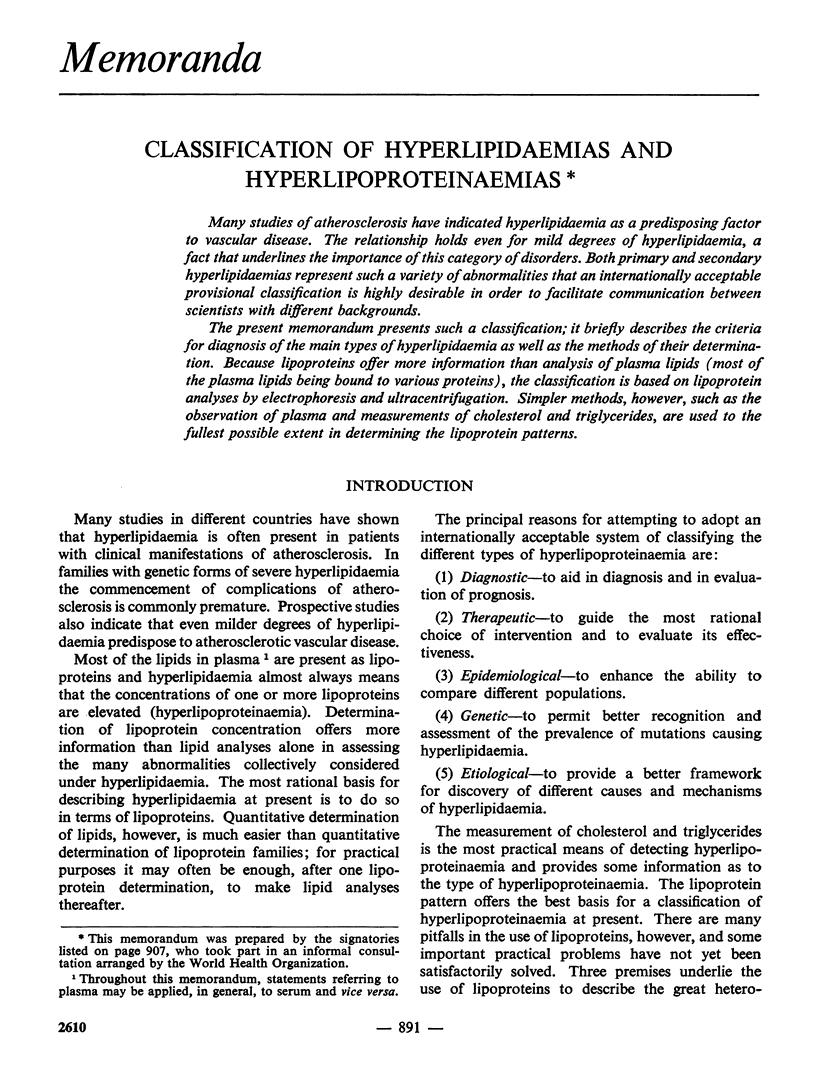
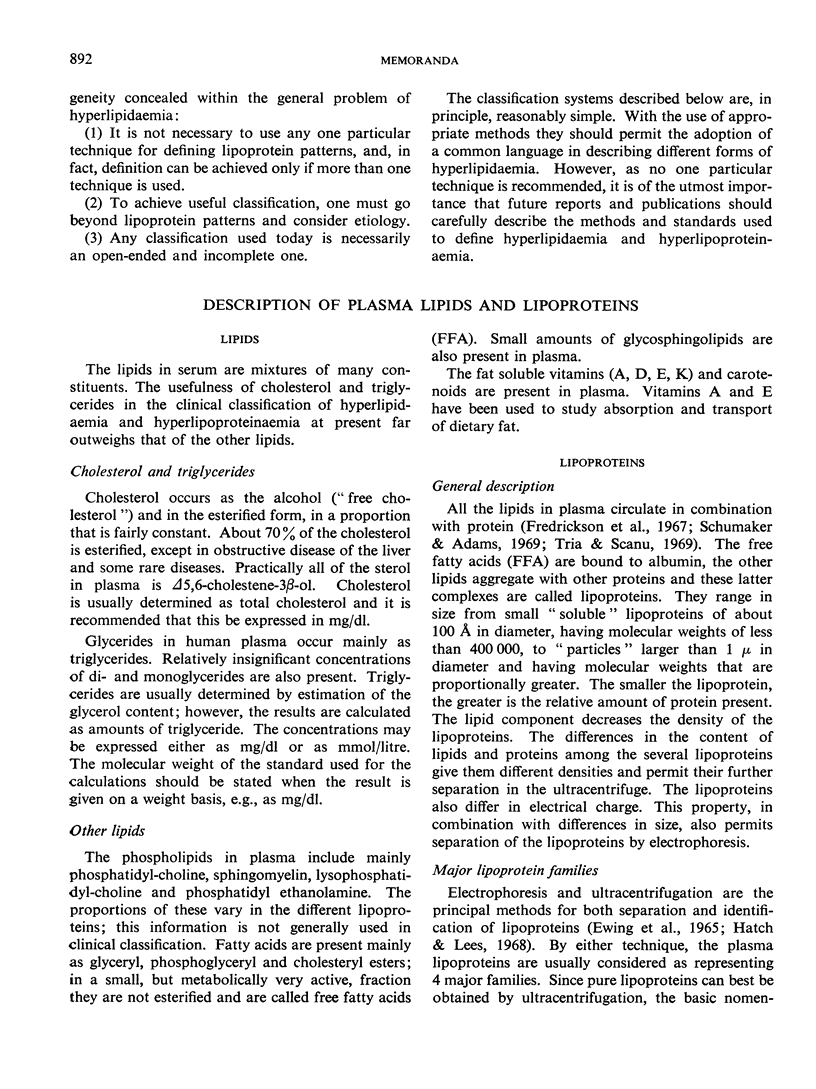
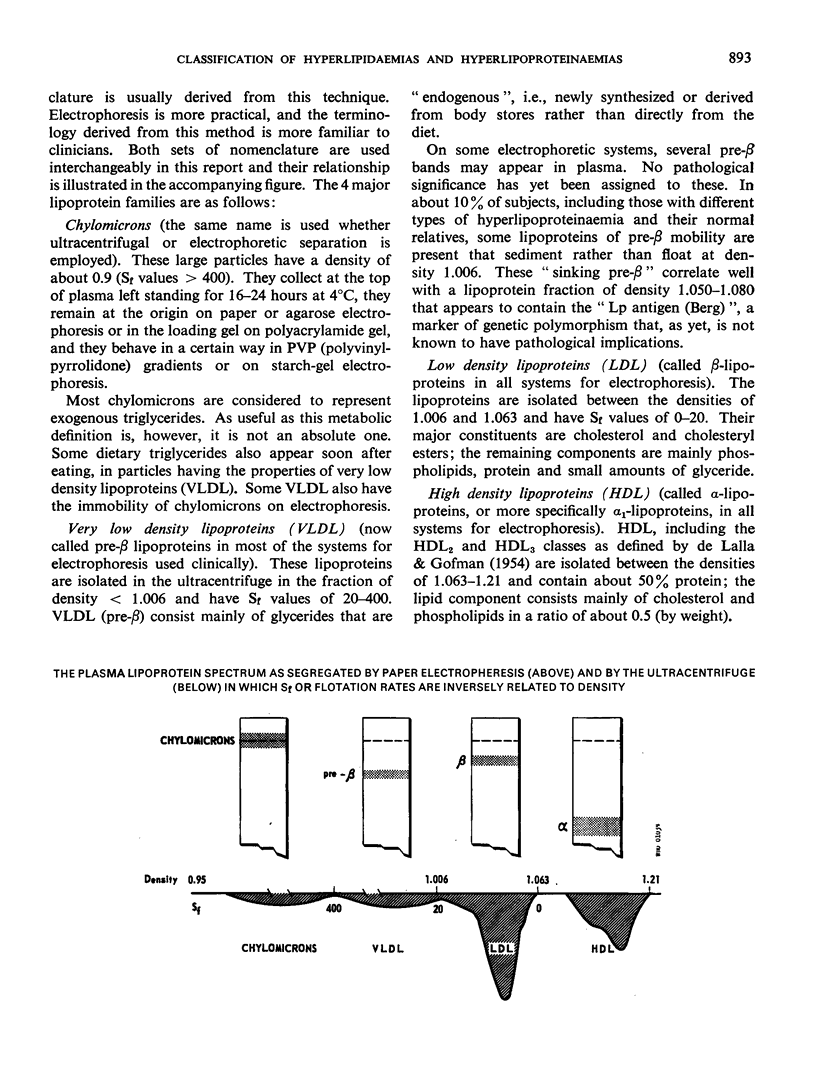
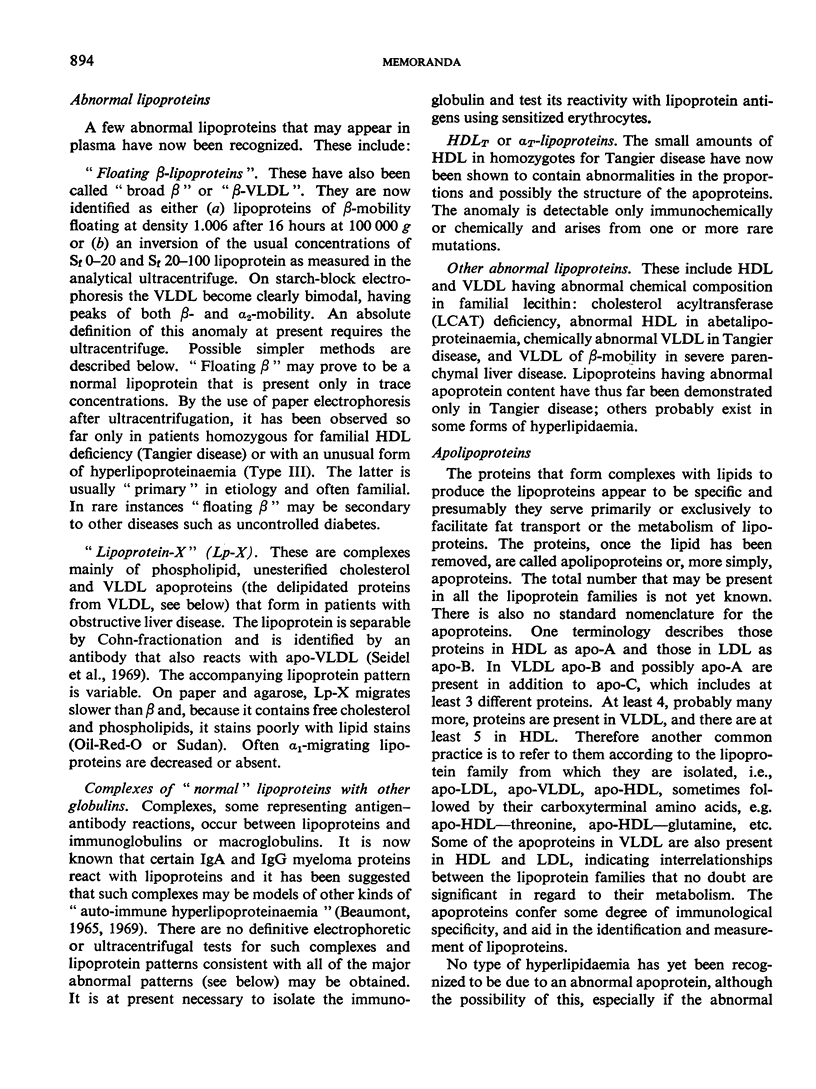
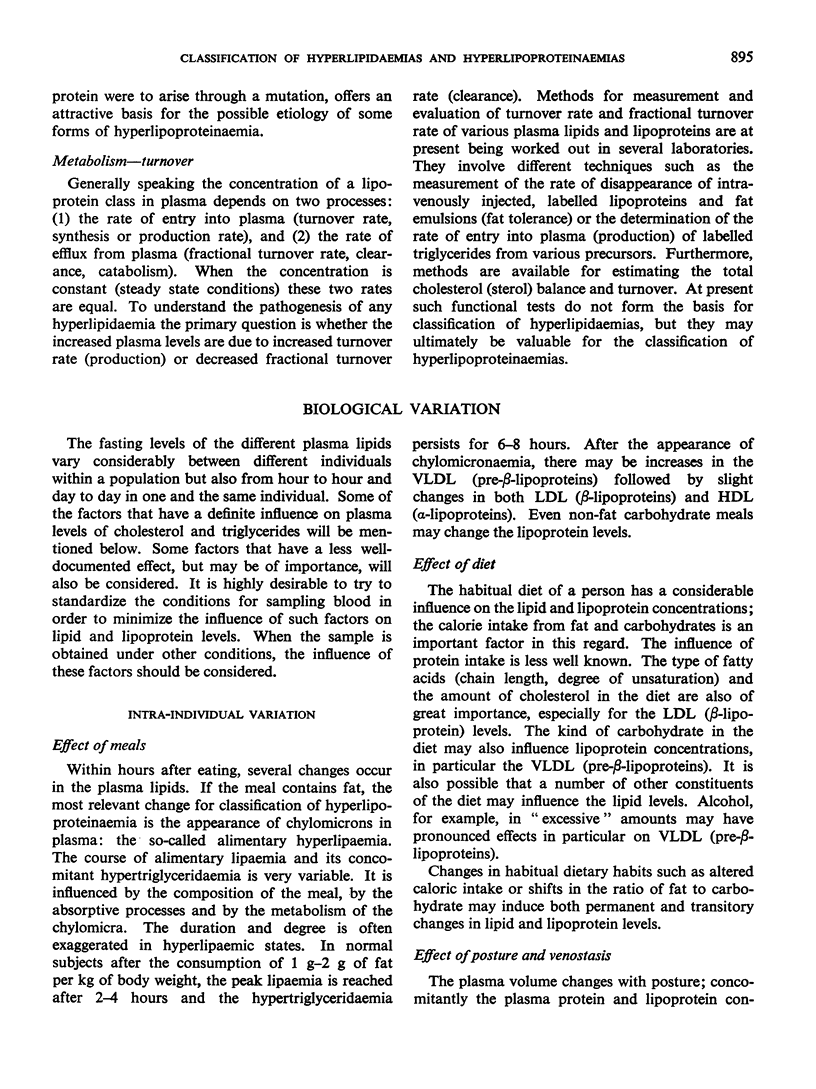
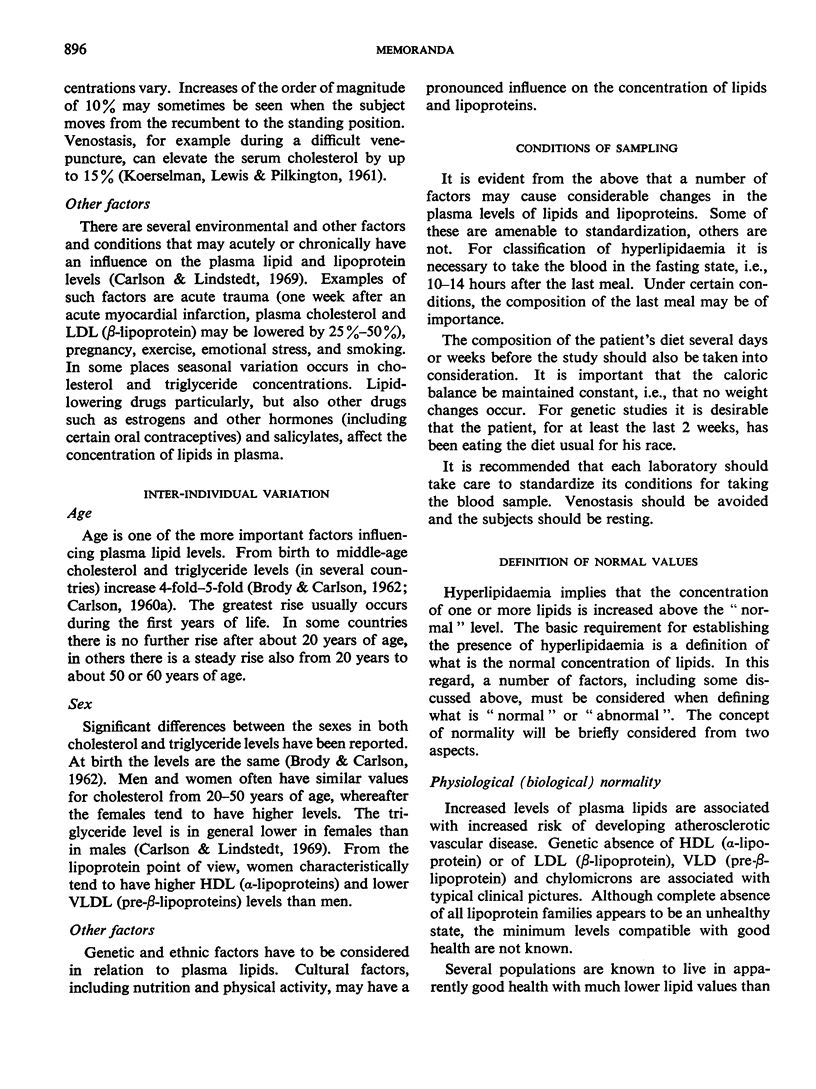
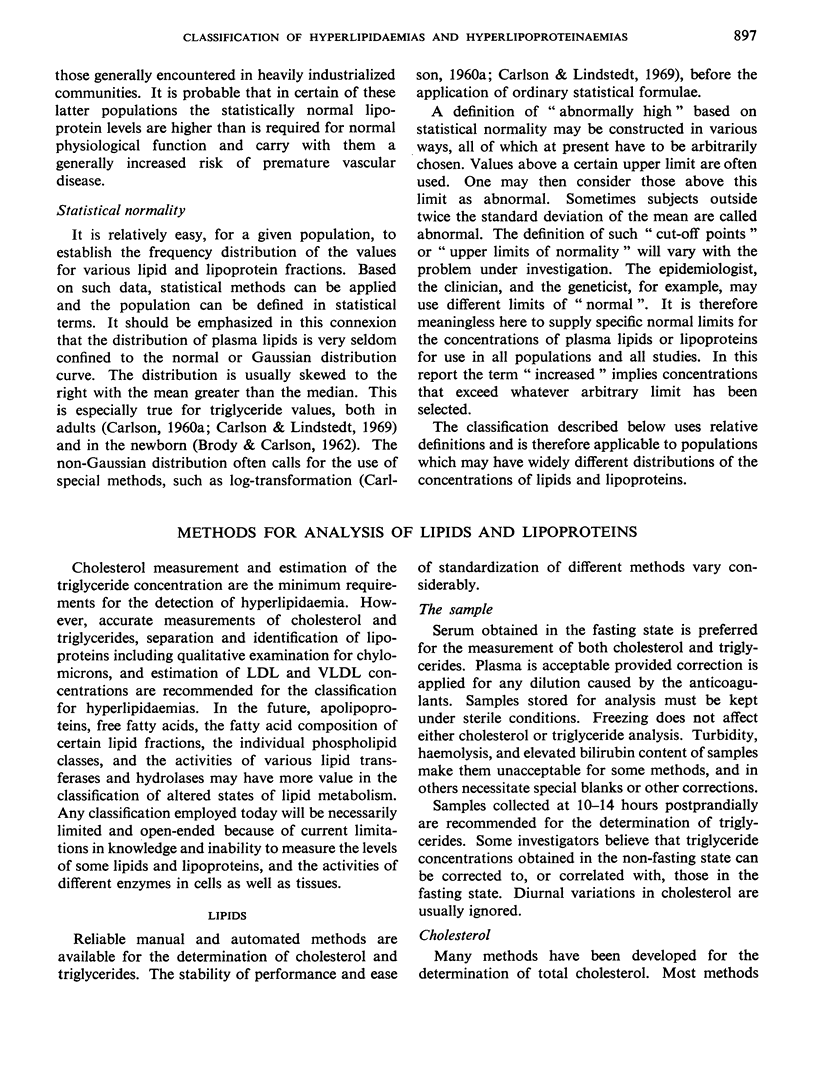
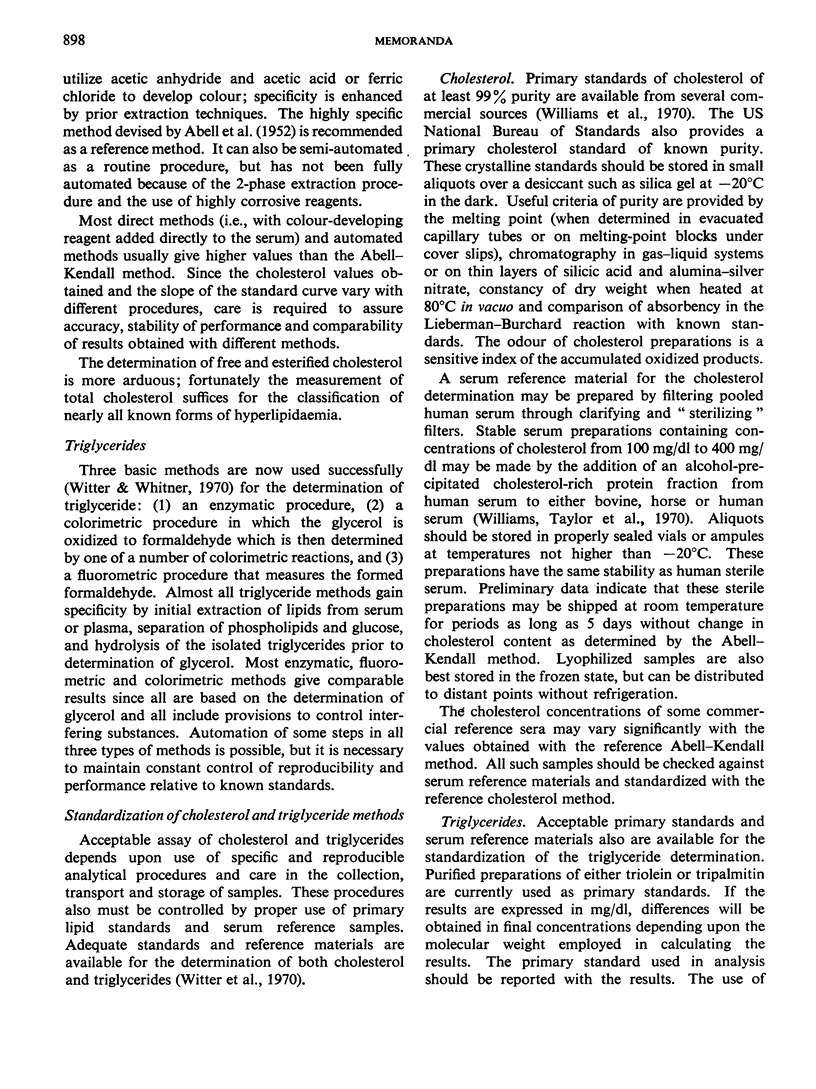
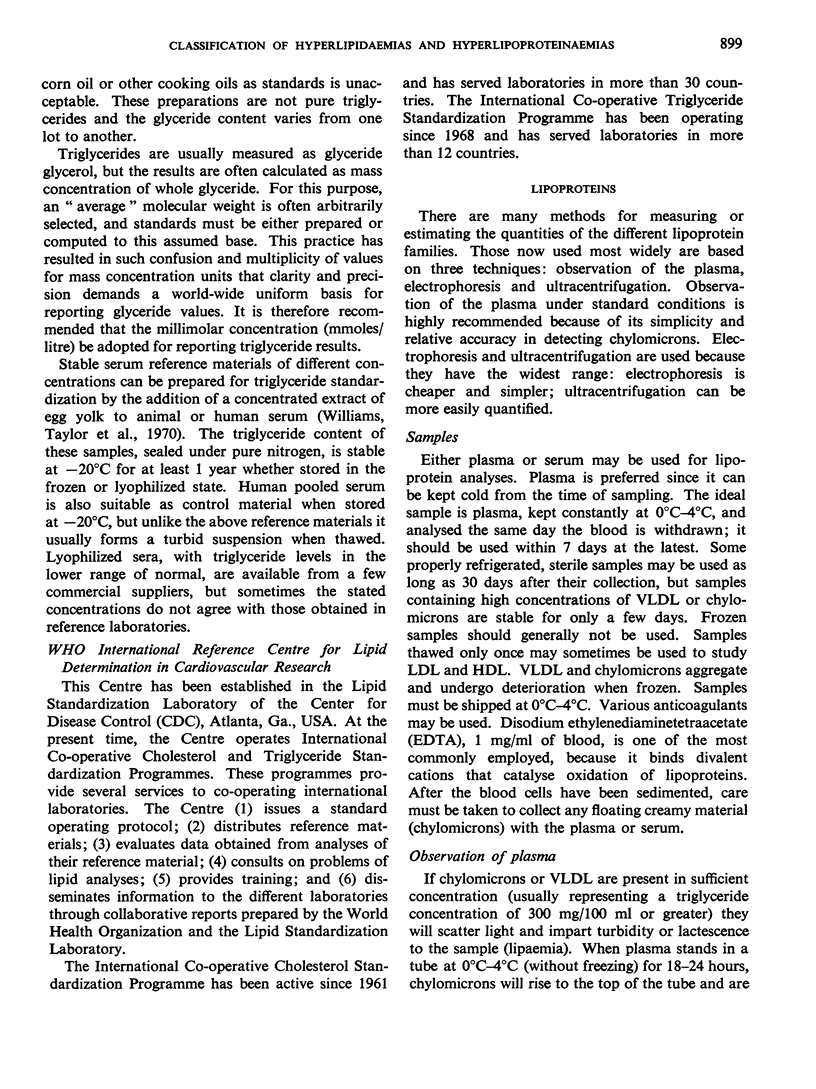
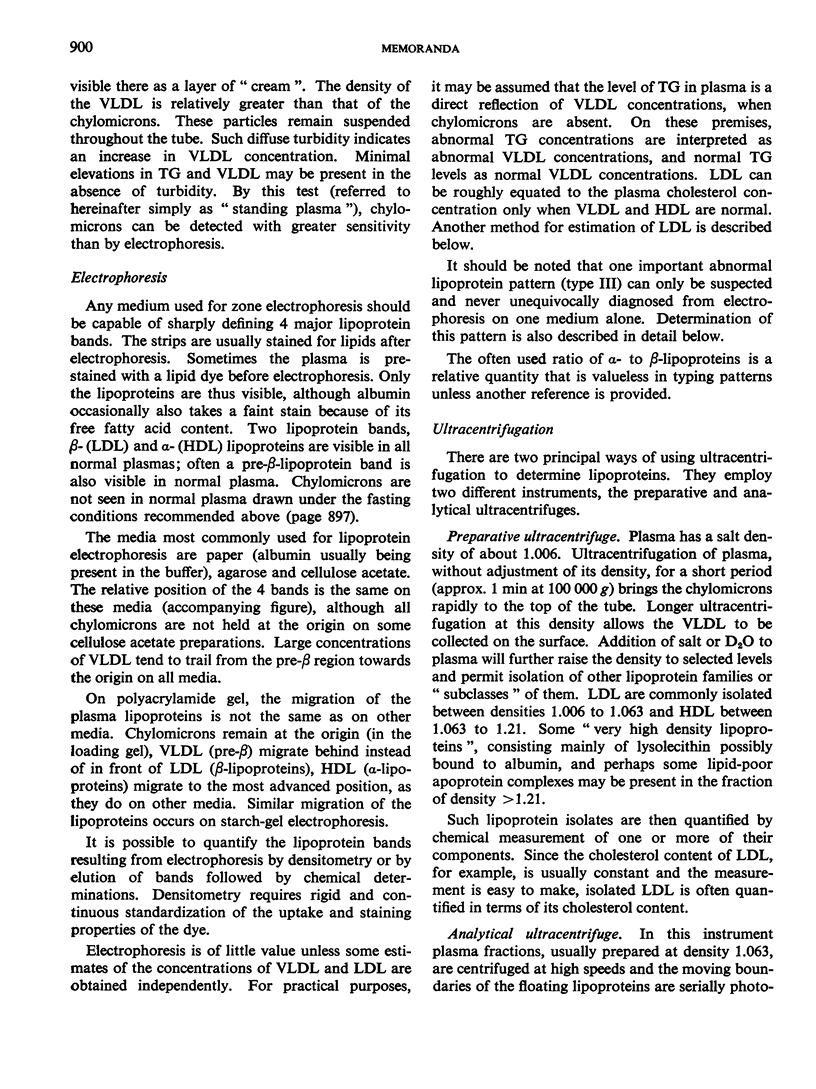
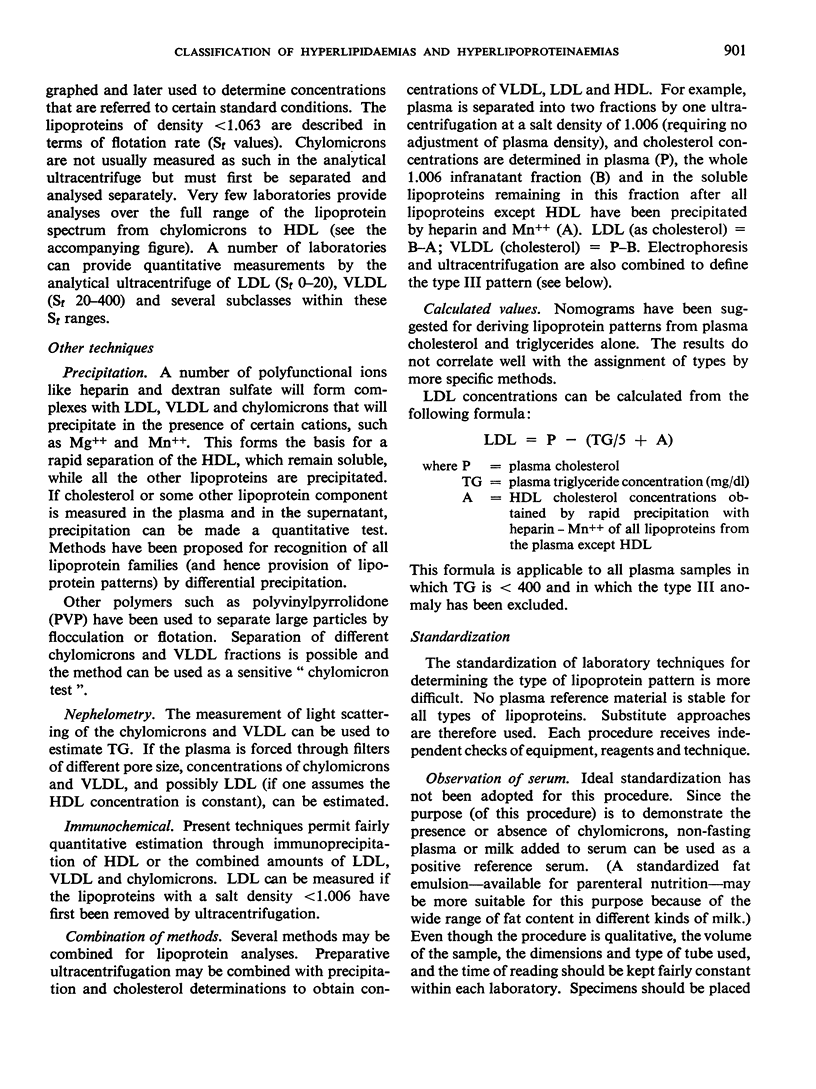
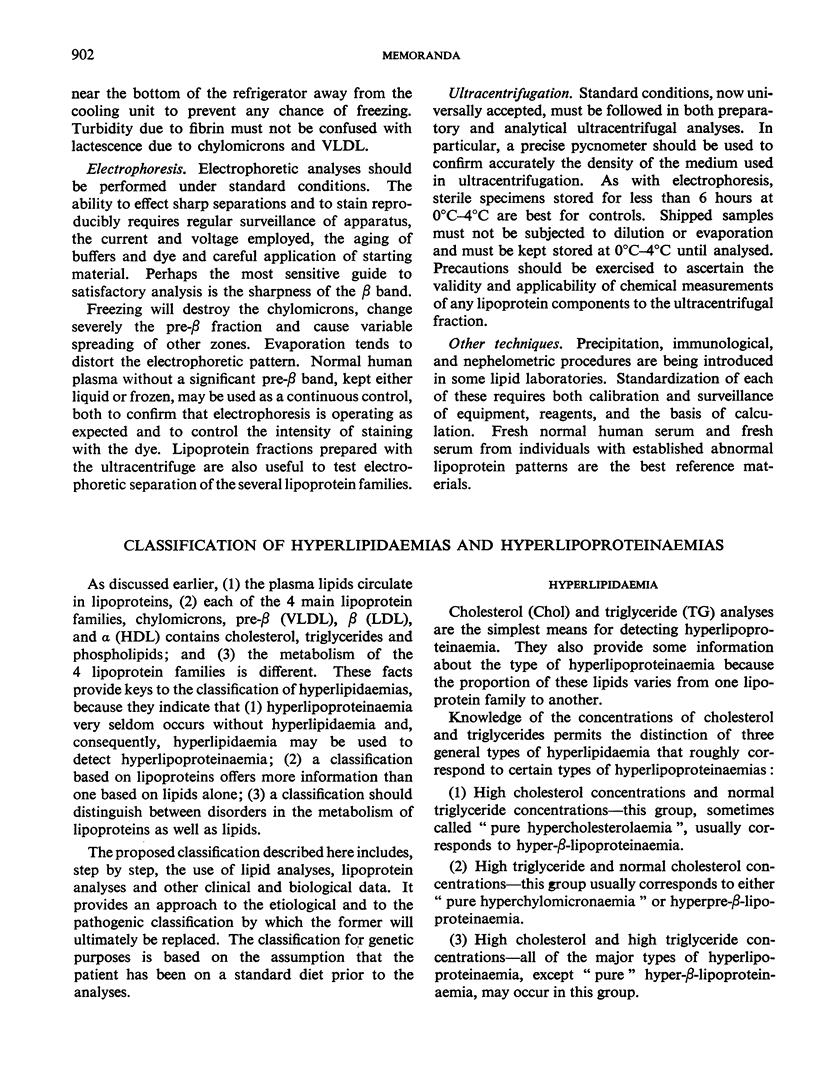
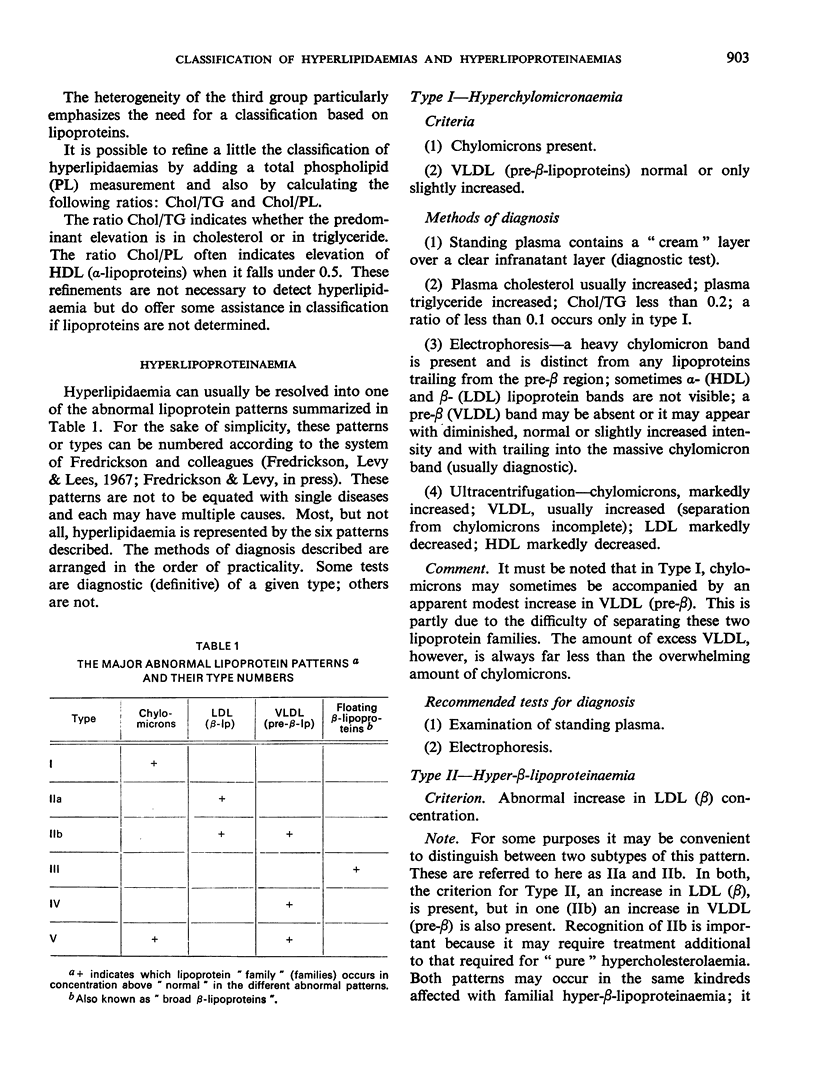
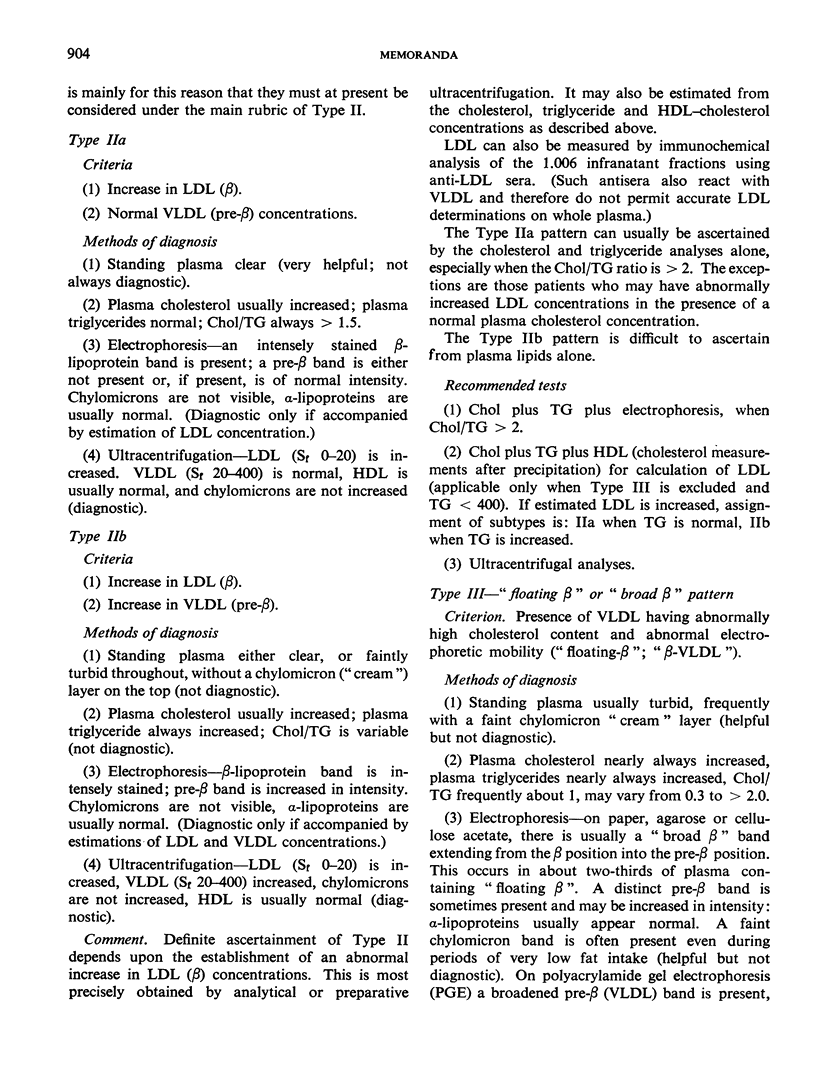
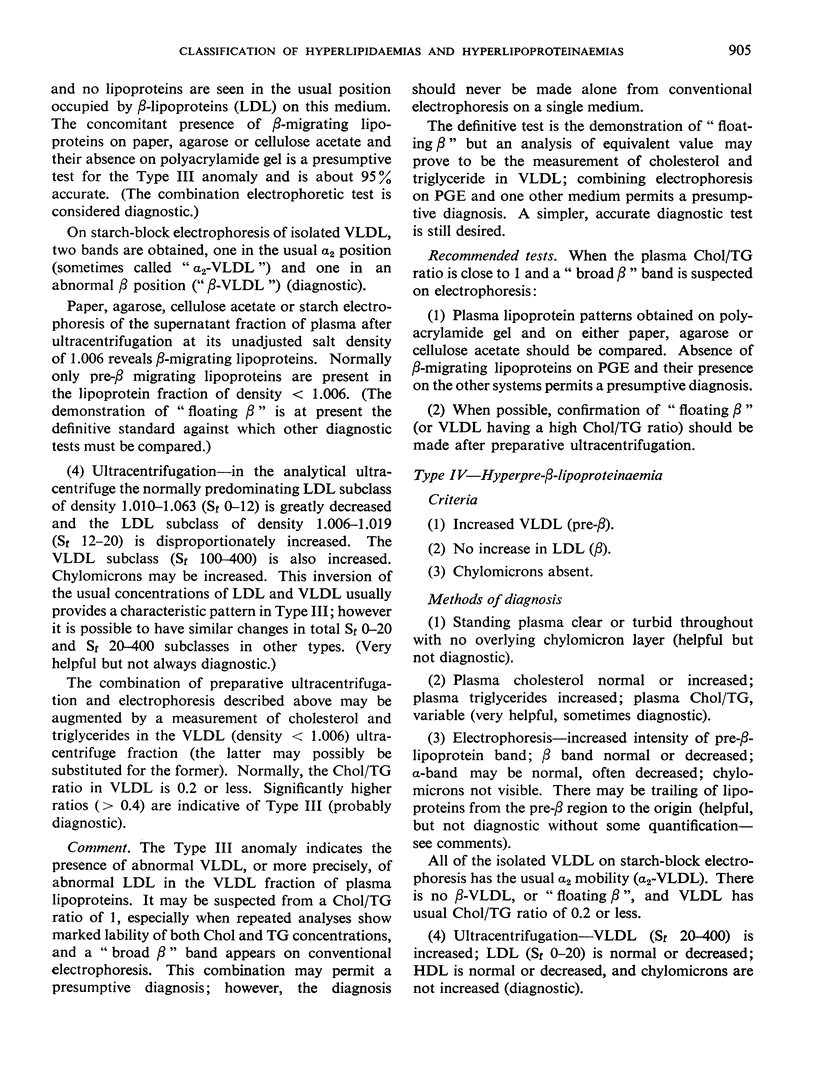
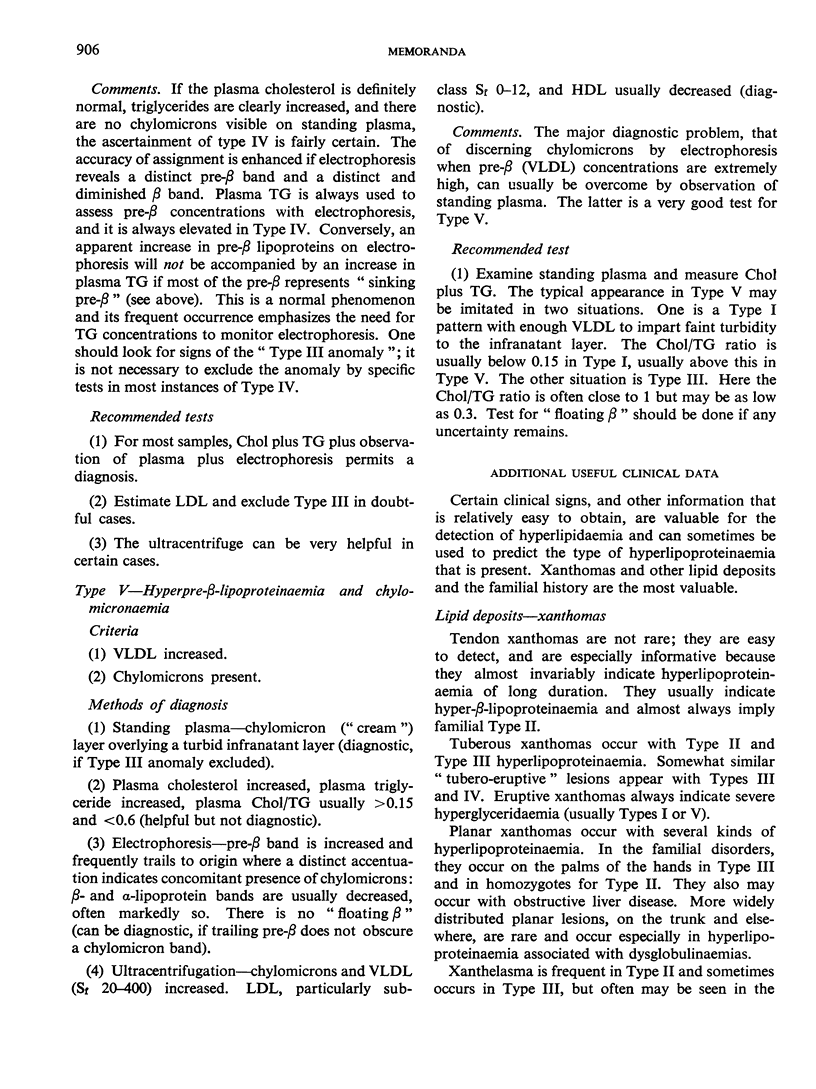
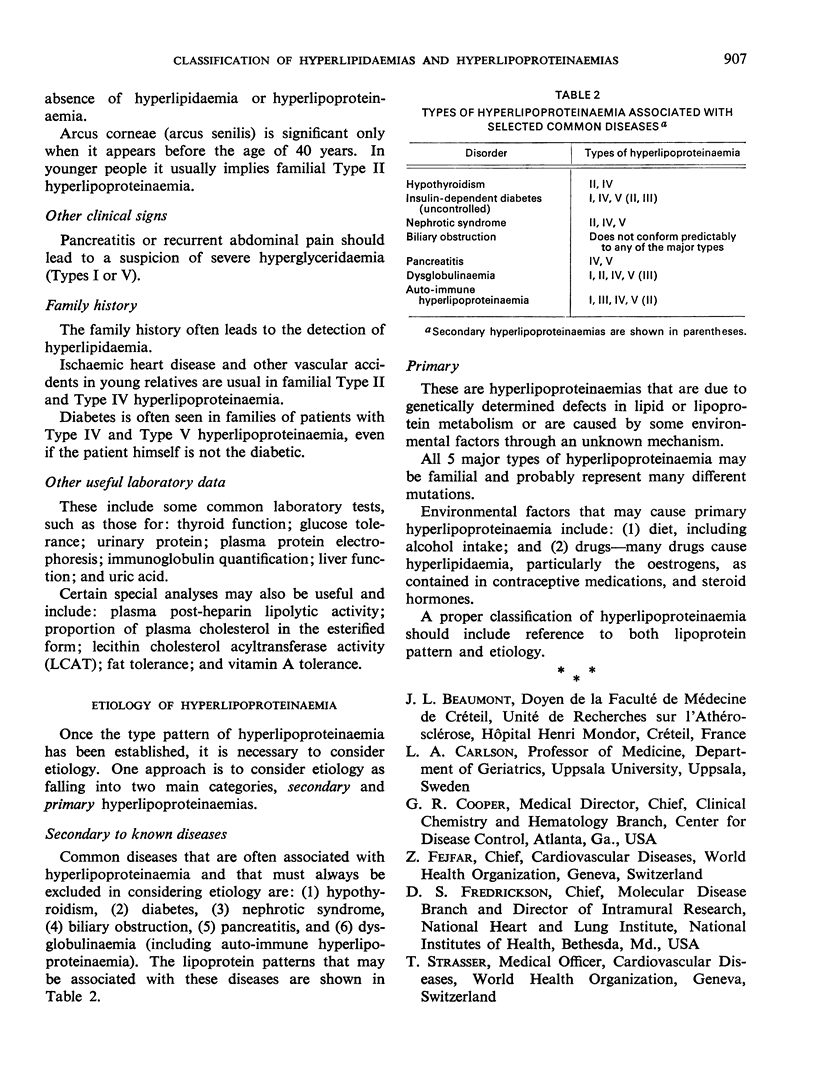
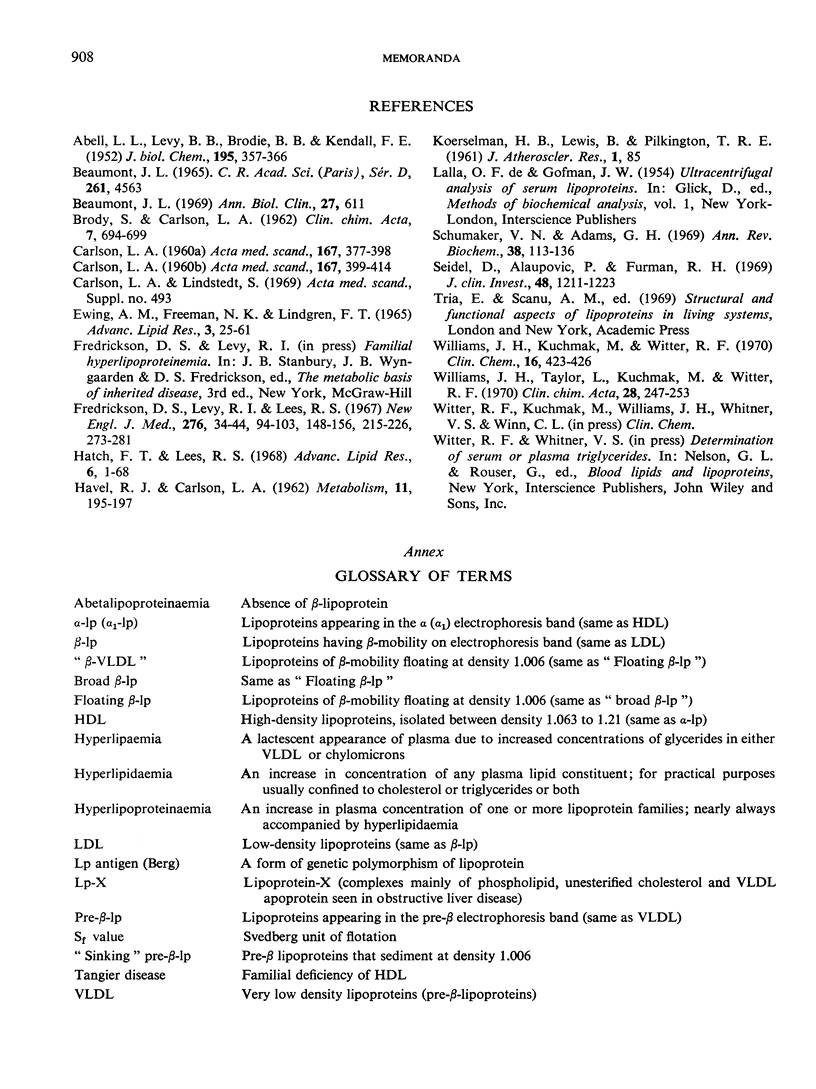
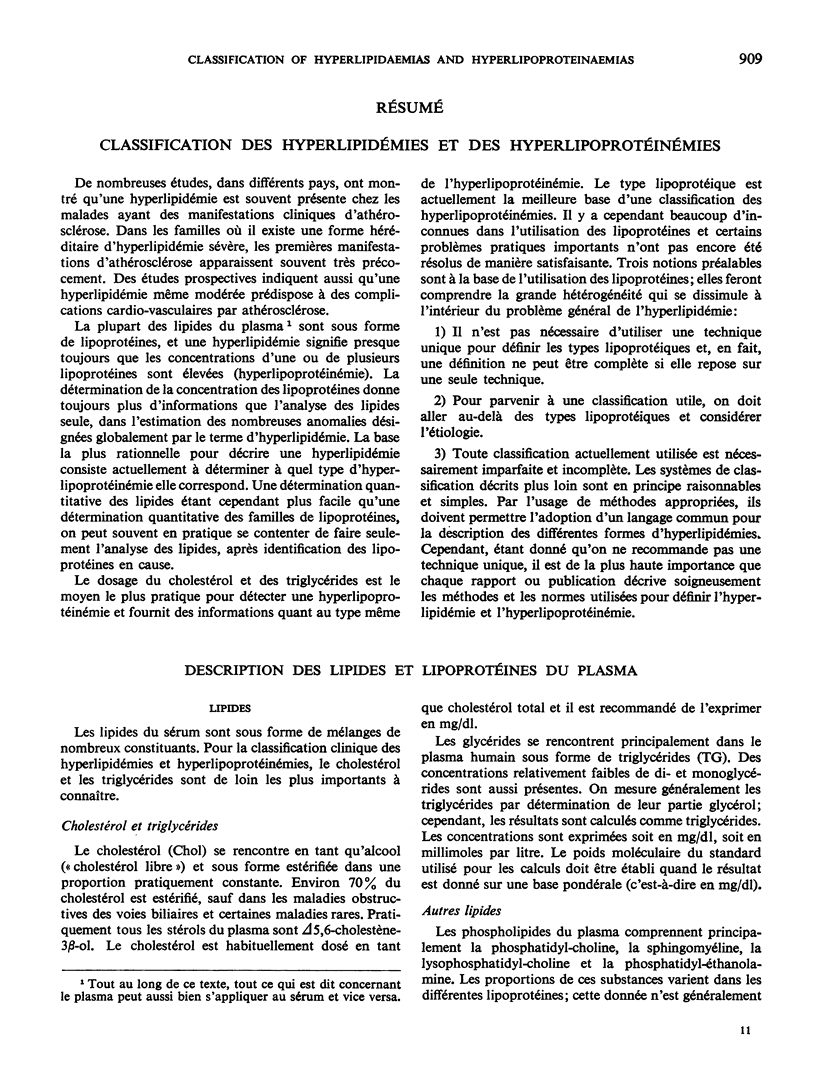
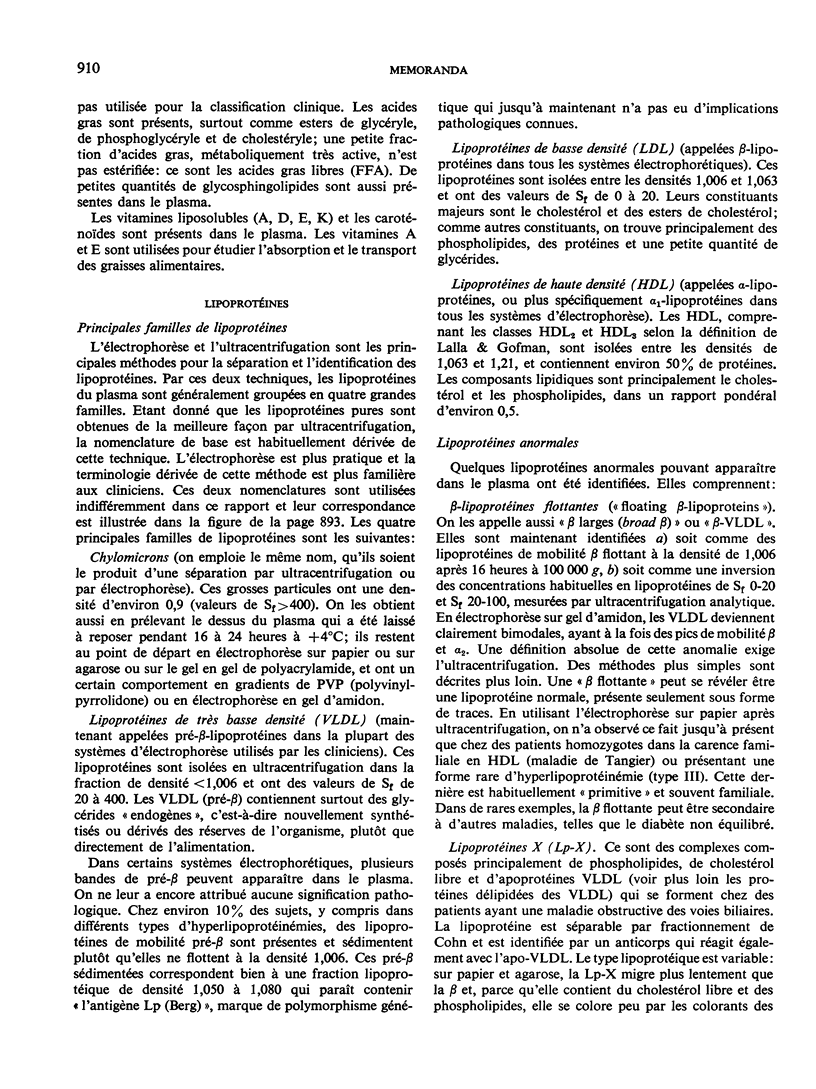
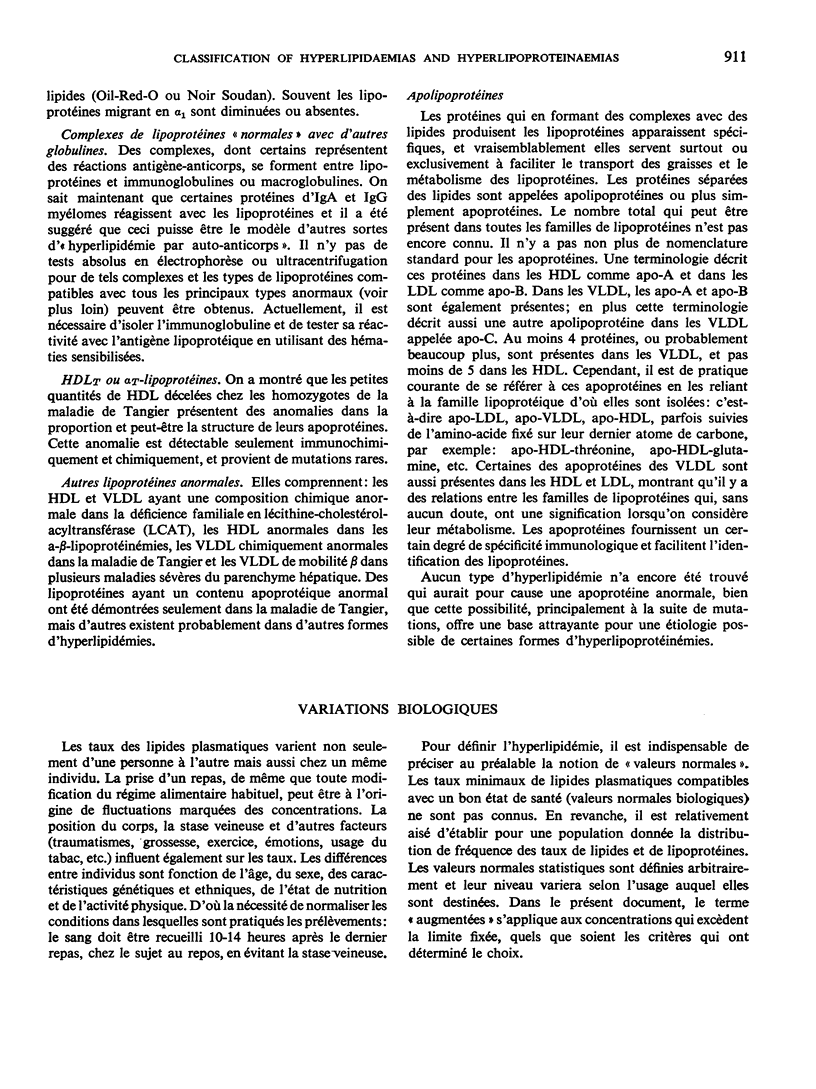
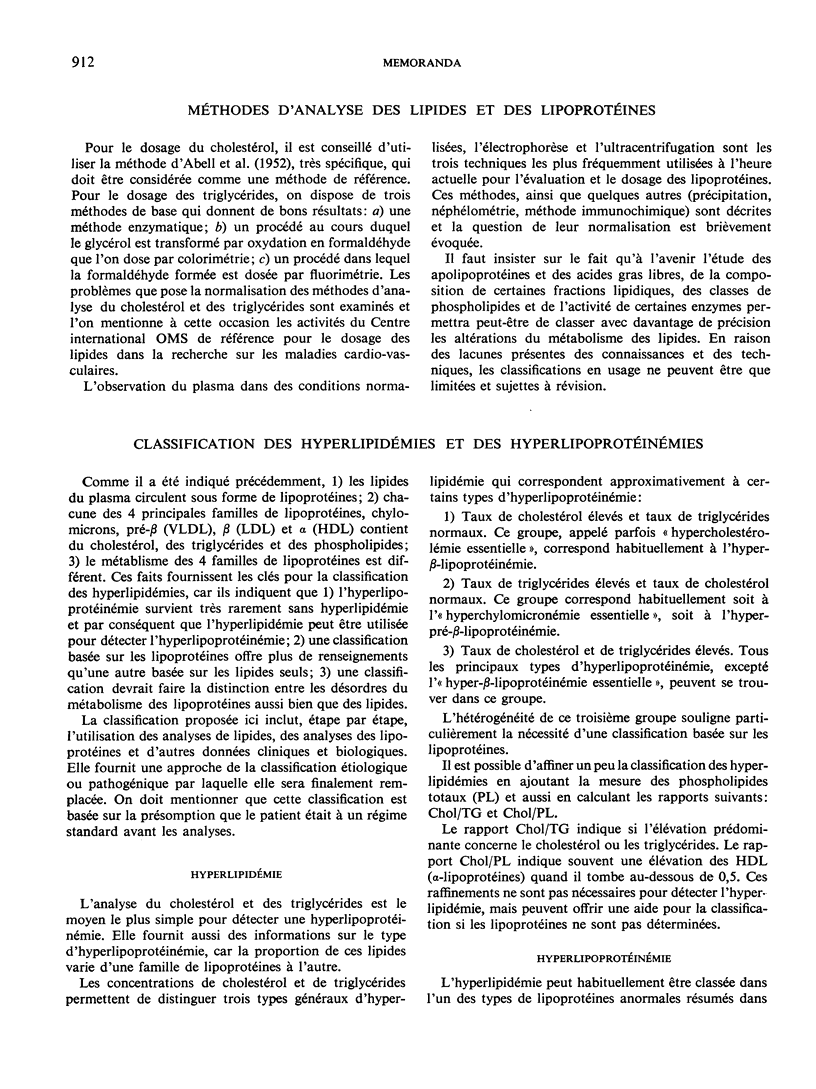
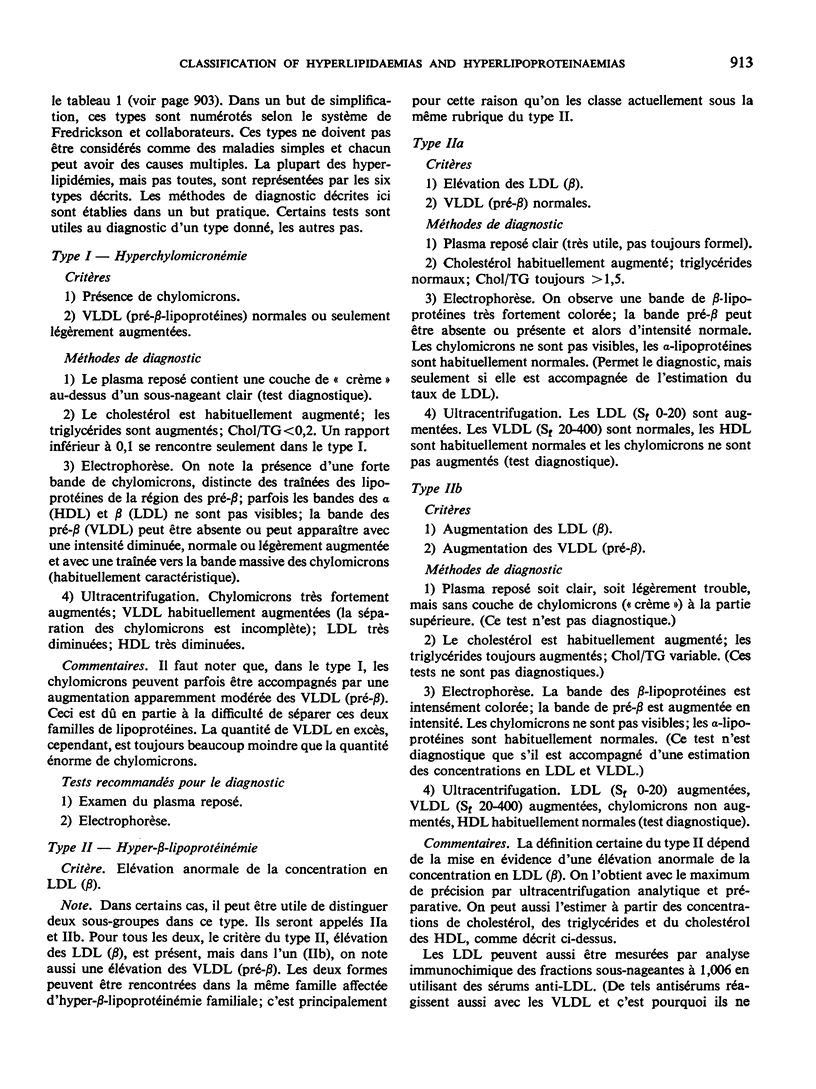
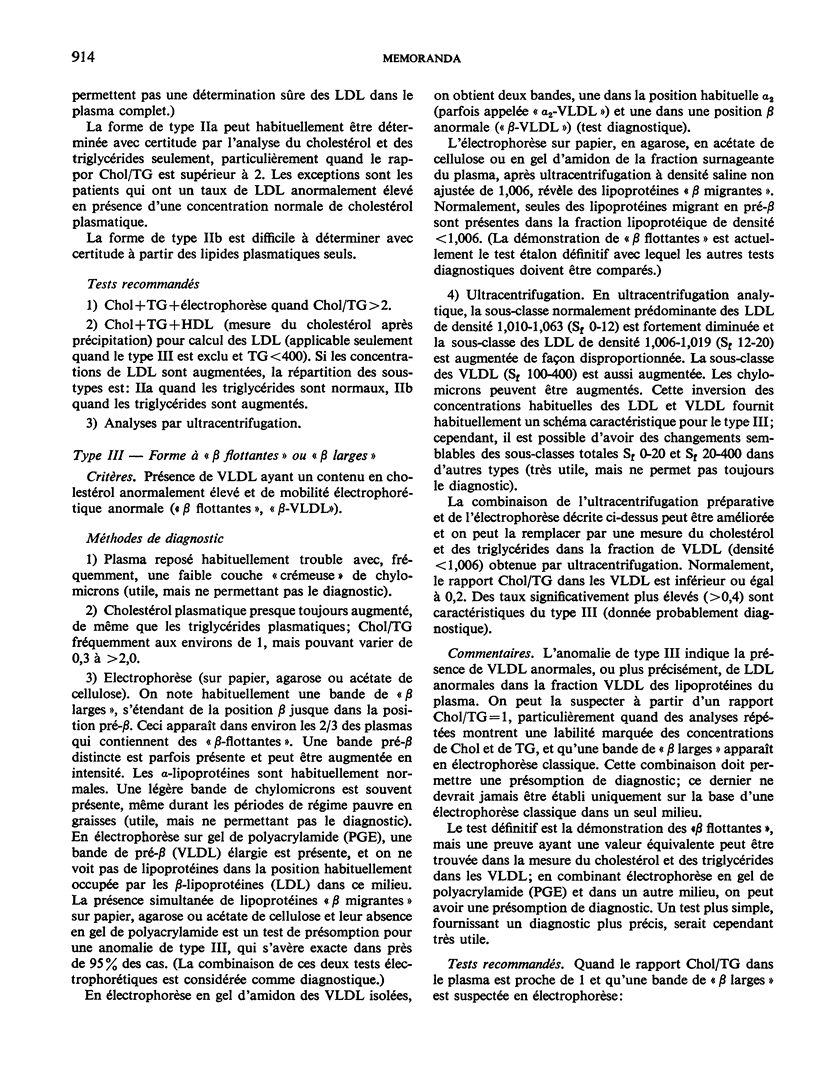
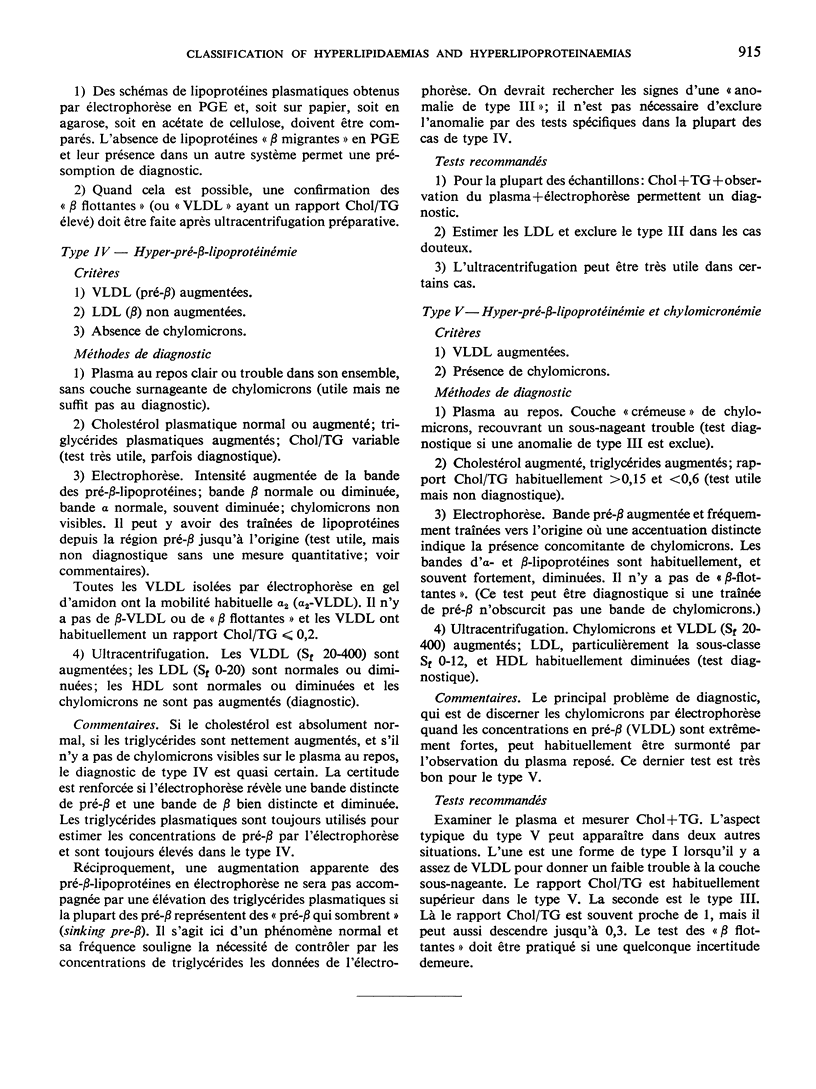
Selected References
These references are in PubMed. This may not be the complete list of references from this article.
- ABEL L. L., LEVY B. B., BRODIE B. B., KENDALL F. E. A simplified method for the estimation of total cholesterol in serum and demonstration of its specificity. J Biol Chem. 1952 Mar;195(1):357–366. [PubMed] [Google Scholar]
- BRODY S., CARLSON L. A. Plasma lipid concentrations in the newborn with special reference to the distribution of the different lipid fractions. Clin Chim Acta. 1962 Sep;7:694–699. doi: 10.1016/0009-8981(62)90152-3. [DOI] [PubMed] [Google Scholar]
- Beaumont J. L. L'hyperlipidémie par auto-anticorps anti-beta-lipoprotéine. Une nouvelle entité pathologique. C R Acad Sci Hebd Seances Acad Sci D. 1965 Nov 22;261(21):4563–4566. [PubMed] [Google Scholar]
- CARLSON L. A. Serum lipids in men with myocardial infarction. Acta Med Scand. 1960 Aug 31;167:399–413. doi: 10.1111/j.0954-6820.1960.tb03562.x. [DOI] [PubMed] [Google Scholar]
- CARLSON L. A. Serum lipids in normal men. Acta Med Scand. 1960 Aug 10;167:377–397. doi: 10.1111/j.0954-6820.1960.tb03560.x. [DOI] [PubMed] [Google Scholar]
- Ewing A. M., Freeman N. K., Lindgren F. T. The analysis of human serum lipoprotein distributions. Adv Lipid Res. 1965;3:25–61. [PubMed] [Google Scholar]
- Fredrickson D. S., Levy R. I., Lees R. S. Fat transport in lipoproteins--an integrated approach to mechanisms and disorders. N Engl J Med. 1967 Jan 5;276(1):34–contd. doi: 10.1056/NEJM196701052760107. [DOI] [PubMed] [Google Scholar]
- HAVEL R. J., CARLSON L. A. Serum lipoproteins, cholesterol and triglycerides in coronary heart disease. Metabolism. 1962 Feb;11:195–197. [PubMed] [Google Scholar]
- Hatch F. T. Practical methods for plasma lipoprotein analysis. Adv Lipid Res. 1968;6:1–68. [PubMed] [Google Scholar]
- KOERSELMAN H. B., LEWIS B., PILKINGTON T. R. The effect of venous occlusion on the level of serum cholesterol. J Atheroscler Res. 1961 Jan-Feb;1:85–88. doi: 10.1016/s0368-1319(61)80058-6. [DOI] [PubMed] [Google Scholar]
- Schumaker V. N., Adams G. H. Circulating lipoproteins. Annu Rev Biochem. 1969;38:113–136. doi: 10.1146/annurev.bi.38.070169.000553. [DOI] [PubMed] [Google Scholar]
- Seidel D., Alaupovic P., Furman R. H. A lipoprotein characterizing obstructive jaundice. I. Method for quantitative separation and identification of lipoproteins in jaundiced subjects. J Clin Invest. 1969 Jul;48(7):1211–1223. doi: 10.1172/JCI106085. [DOI] [PMC free article] [PubMed] [Google Scholar]
- Williams J. H., Kuchmak M., Witter R. F. Evaluation of the purity of cholesterol primary standards. Clin Chem. 1970 May;16(5):423–426. [PubMed] [Google Scholar]
- Williams J. H., Taylor L., Kuchmak M., Witter R. F. Prepation of hypercholesterolemic and-or hypertriglyceridemic sera for lipid determinations. Clin Chim Acta. 1970 May;28(2):247–253. doi: 10.1016/0009-8981(70)90087-2. [DOI] [PubMed] [Google Scholar]


